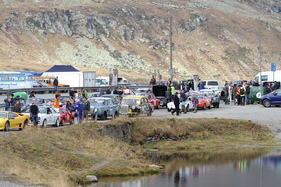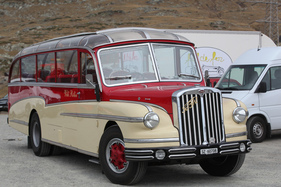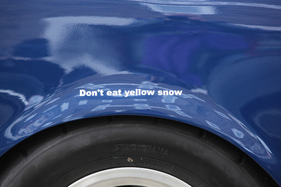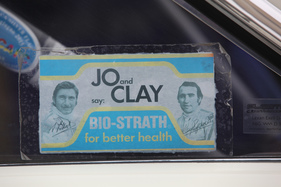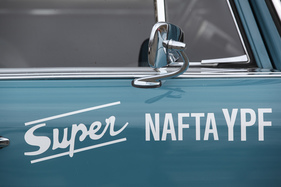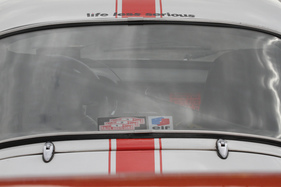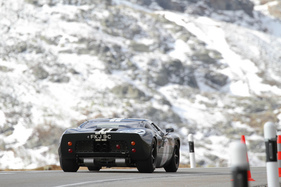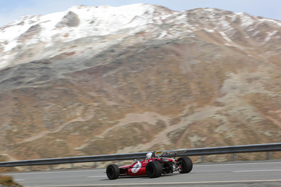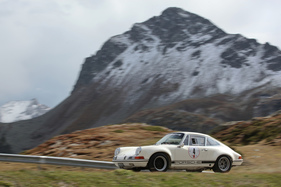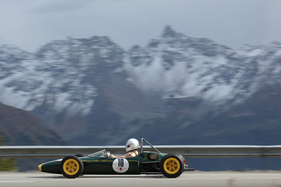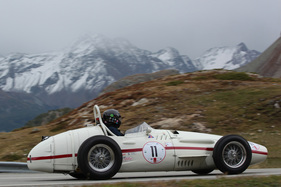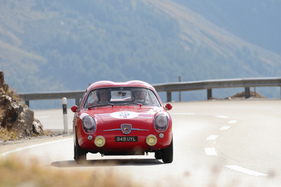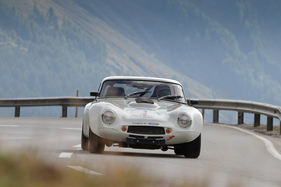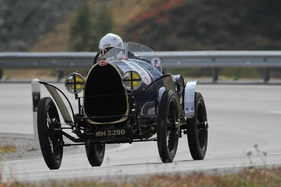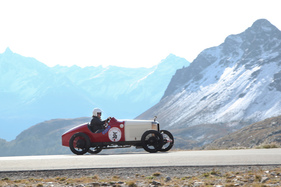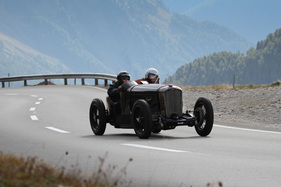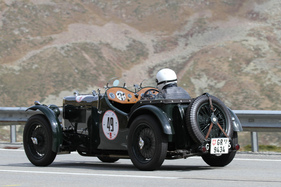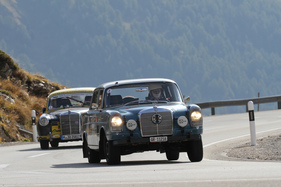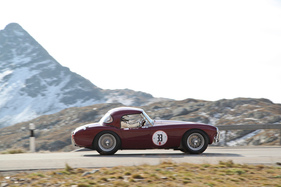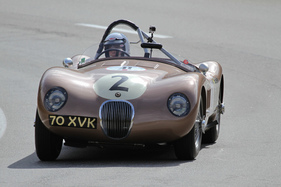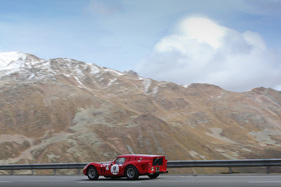All of a sudden, the mountain world at the Bernina Pass becomes quiet, with only a cawing bird in the sky to be heard. The pass road is closed, the spectators along the route gaze intently into the distance. Then you hear the growl of a distant four-cylinder engine and perhaps two minutes later the first of around 60 racing and sports cars approaches.
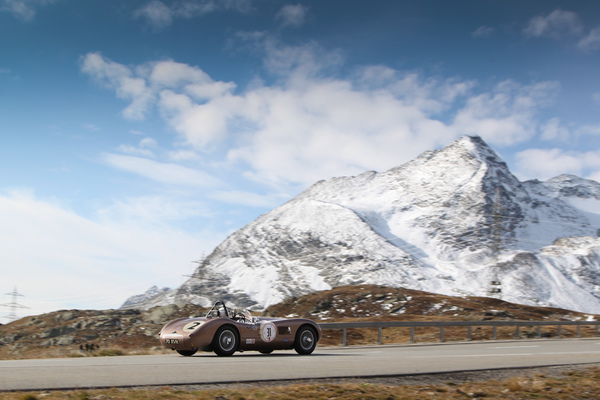
Nowhere else can the sounds of old cars be heard as intensely as at a race in the mountains. Whether Maserati 250F, Lotus 11 or Porsche 911, they blare their characteristic fanfares into the Alpine scenery and whizz past within seconds.
5.7 km, over 50 bends
It is a long, fast track that leads from La Rösa at 1880 meters up to the top of the Bernina Pass at 2235 meters. Anyone who completes the route in less than 3:20 minutes, like Chris Ward in his 1965 Ford GT40, averages over 100 km/h. However, some of the tight bends should not be underestimated as they force you to brake hard.
However, the hairpin bends are repeatedly replaced by fast bends and straights that allow top speeds of well over 160 km/h. The wide and well-built road allows significantly higher speeds than normally permitted by Swiss road traffic legislation.
Best time
In the end, 16 of the 65 registered participants set the fastest time, while the others were measured for consistency.
Christian Kleinguti in his 1970 Brabham BT30 Formula 2 and Daniele Perfetti in a 1971 Porsche 911 ST line up behind the fastest Ward.
Fourth fastest after three timed runs is Lukas Halusa in a 1964 Jaguar E-Type Semi Lightweight, fifth is Martin Halusa in a 1956 Maserati 250F, followed by Werner Pircher in a 1966 Lotus 41 Formula 3.
It is a colorful mixture of classes that face the stopwatch. The spectrum ranges from thoroughbred racing cars to touring cars and reads like a who's who of British-Italian automotive history. An Aston Martin DB2/4 Mk1 from 1953 with Bertone bodywork offers the perfect combination of elements from both countries. With times under four minutes, Heinz Stamm is also really fast on the road.
The Maserati 250F on the mountain
Hardly anyone in the paddock can get past the white Maserati 250F, the front-engined monoposto looks too attractive. On the track, it lets the powerful song of its in-line six-cylinder engine ring out - this attractive car is sure to attract attention.
There is certainly competition, such as the Jaguar C-Type or the D-Type, but also the delicate Lotus Eleven or the graceful Fiat-Abarth 750 GT Zagato.
In terms of sonority, however, hardly anyone can compete with the American Ford V8 engines, which, in addition to the Ford GT40, also power the Ford Galaxie 500 and Ford Falcon Sprint touring cars, the two Ford Mustangs and the TVR Griffith V8.
Pre-war rarities
While some spectators are particularly enthusiastic about the sports cars of the sixties and seventies, fans of pre-war sports and racing cars are particularly interested in the quartet of cars built in the twenties and thirties.
At almost 90 years old, a Bugatti Type 13 Brescia is the oldest car on the Bernina Pass road, followed by an Amilcar CGSS from 1928.
Hardly less old is the beautifully patinated Rally NCP from 1930.
And the British are represented by a rare MG Magnette K2 from 1933.
Cars from the Bugatti and Amilcar brands were already at the start of the 1929/1930 Bernina races, so it's all the better that they will be back in 2017.
The St. Moritz Automobile Weeks
In any case, the Bernina mountain race looks back on a long tradition, as the pass road was already being conquered in racing mode at the end of the 1920s. At that time, the St. Moritz Automobile Week was supplemented by a Concours d'Elégance, skill driving and a kilometer race. And even an entertainment program was considered around 90 years ago.

The organizers of the Bernina Gran Turismo event are also guided by this idea and so tourists and race visitors can watch car films in advance and party at the opening party in the Dracula Club.

Historic Rhaetian Railway trains and old coaches have been organized to transport spectators to the top of the pass. Around 500 passengers have taken advantage of this offer, according to the organization of the mountain race.
More or less even
In addition to the racing class, there is also the regularity classification, for which the majority of participants have registered. However, it is not really important for the drivers to achieve identical running times, especially as there are draconian penalty points for undercutting the standard times (4:25 minutes for most). With a total of 27 classes on the results list, almost everyone can feel a bit like a winner.
Nevertheless, some drivers manage to complete the two best runs with a difference of around one second, such as Thomas Hanna in a 1959 Mercedes-Benz 190 Ponton or Thomas Ward at the wheel of a magnificent 1963 AC Ace.
Philip Mouser in the 1952 Jaguar C-Type is even more evenly matched, with a difference of just three tenths between their times.
Sunshine at last
Even the weather is cooperating in 2017, after wet weather and fog dampened the mood in both 2015 and 2016. Although it didn't stay completely dry on September 23 and 24, 2017, blue skies could be seen from time to time and the mountains presented themselves in the most beautiful light.
Peter thus compensated spectators, participants and the organization for the poor weather conditions of previous years.
Lots of positive feedback
It was a fantastic event, according to representatives of the race organization. The participants are also full of praise for the course and the atmosphere, and the minor problems with securing the route and the associated delays are quickly forgotten. The main thing is that there are no accidents or incidents, says a driver from the cockpit, and a few cows actually cause the most excitement when they refuse to comply with the track closure and have to be moved back to the pastures.







































































































































































































































































































































































































































































































